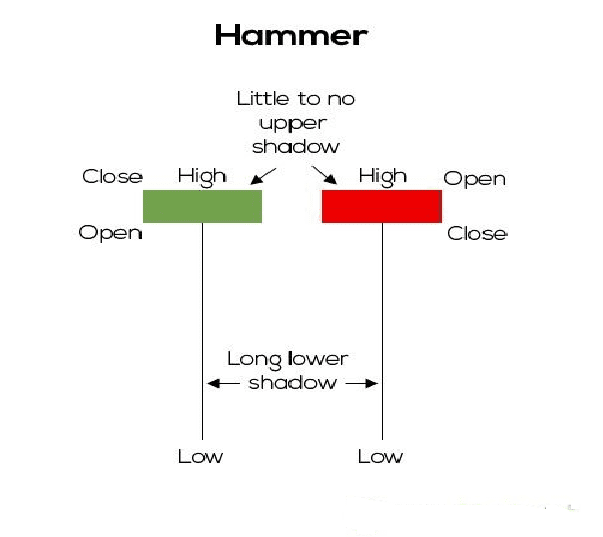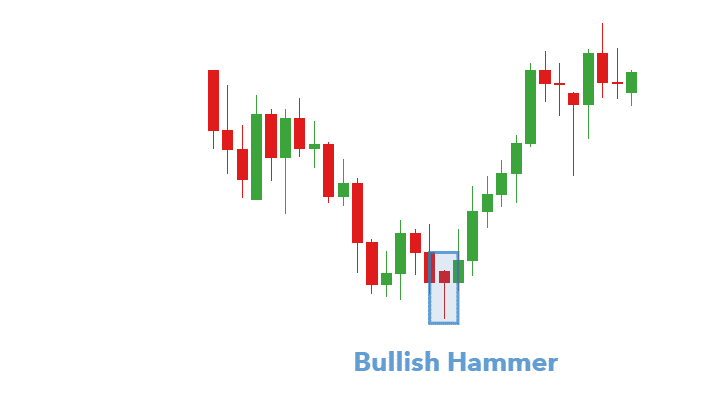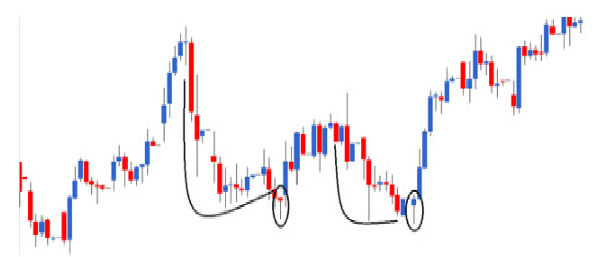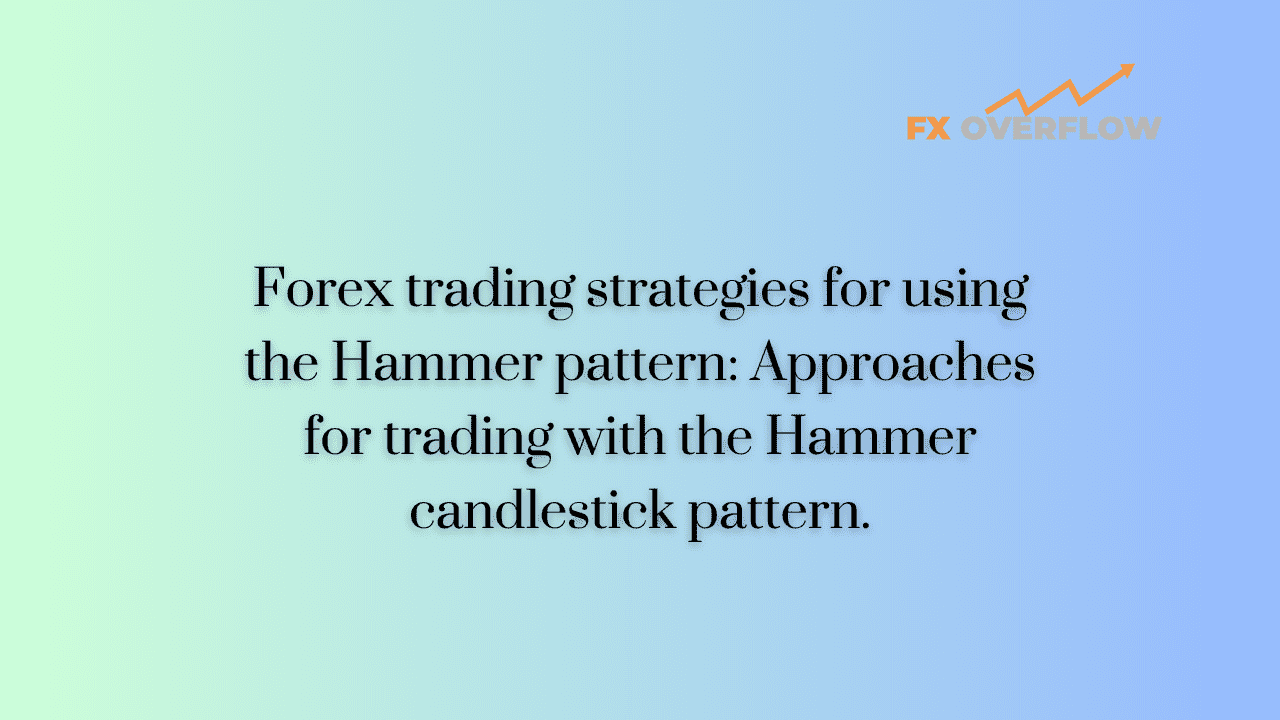Forex Trading Strategies for Using the Hammer Pattern: Approaches for Trading with the Hammer Candlestick Pattern
In the world of forex trading, candlestick patterns have long been valued as effective tools for making informed trading decisions. Among these patterns, the hammer candlestick pattern stands out as a powerful indicator of potential trend reversals. The hammer pattern, characterized by its distinct shape and position, provides traders with valuable insights into market sentiment and potential price movements. In this article, we will delve into the intricacies of the hammer pattern and explore various trading strategies to leverage its predictive potential.

Table Content
I. Understanding the Hammer Pattern
1. Small Body
2. Long Lower Wick
II. Trading Strategies with the Hammer Pattern
1. Hammer Pattern Confirmation
2. Bullish Engulfing Pattern
3. Using Technical Indicators
4. Wait for Price Confirmation
5. Risk Management
III. Real-World Example
IV. Footnote
Understanding the Hammer Pattern:
The hammer pattern is a single candlestick pattern that often appears at the bottom of a downtrend. It consists of a small body located at the top of the candlestick and a long lower wick, which is at least twice the length of the body. Visually, the hammer pattern resembles a hammer, with its handle (the long lower wick) and head (the small body). This formation suggests a rejection of lower prices and a potential reversal in market sentiment.
The key components of a hammer pattern are as follows:
1. Small Body: The small body near the top of the candlestick indicates a narrow range between the opening and closing prices during the trading period. This can signify that the market's selling pressure is weakening.
2. Long Lower Wick: The most distinctive feature of the hammer pattern is its long lower wick, which represents the distance between the lowest price reached during the trading period and the opening or closing price. This long wick indicates that sellers pushed the price significantly lower, but buyers managed to regain control and drive the price back up.
The hammer pattern's appearance after a downtrend suggests that buyers are stepping in, causing a potential shift in market dynamics from bearish to bullish. However, traders should exercise caution and not rely solely on the pattern for making trading decisions. Confirmation through additional technical and fundamental analysis is crucial.
Trading Strategies with the Hammer Pattern:
1. Hammer Pattern Confirmation:
While the hammer pattern itself is a strong indicator of potential trend reversal, confirming its reliability is essential. Traders can incorporate additional tools, such as trendlines, moving averages, or support and resistance levels, to verify the validity of the pattern. If the hammer forms near a key support level or a trendline, it strengthens the pattern's significance.

2. Bullish Engulfing Pattern:
One effective strategy is to combine the hammer pattern with the bullish engulfing pattern. After a hammer forms, traders wait for the next candlestick to be a bullish engulfing pattern, where the second candle completely engulfs the body of the hammer. This combination provides stronger confirmation of a potential bullish reversal.

3. Using Technical Indicators:
Incorporating technical indicators can enhance the accuracy of trading decisions based on the hammer pattern. The Relative Strength Index (RSI) and Moving Average Convergence Divergence (MACD) are popular choices. When the hammer appears along with oversold conditions on the RSI or a bullish MACD crossover, it adds weight to the potential reversal signal.
4. Wait for Price Confirmation:
To minimize false signals, traders can wait for price confirmation after a hammer pattern forms. Instead of entering the trade immediately, they can wait for the price to move a certain percentage above the hammer's high. This approach helps ensure that the price is indeed reversing before committing to a trade.
5. Risk Management:
As with any trading strategy, risk management is crucial when trading based on the hammer pattern. Placing a stop-loss order below the low of the hammer candle can help limit potential losses if the reversal doesn't materialize as expected. Additionally, considering proper position sizing and risk-reward ratios is essential to achieve consistent profitability.
Real-World Example:
Let's illustrate the application of these strategies with a real-world example:
Suppose a trader identifies a hammer pattern on the daily chart of a currency pair that has been experiencing a prolonged downtrend. The hammer forms near a significant support level and is followed by a bullish engulfing pattern the next day. The trader also observes oversold conditions on the RSI.
In this scenario, the trader waits for a price confirmation by setting an entry order slightly above the high of the bullish engulfing candle. To manage risk, they place a stop-loss order below the low of the hammer candle. The trader calculates a favorable risk-reward ratio of 1:2.
As the price exceeds the entry order, the trade is triggered. The market responds to the pattern and confirmation, resulting in a substantial bullish move over the next few days. The trader adheres to their risk management strategy and takes profit once the price reaches a predetermined level.
Footnote:
The hammer pattern is a valuable tool in a forex trader's arsenal, providing insights into potential trend reversals after a downtrend. However, like all trading strategies, it is not without its limitations and risks. Traders should remember that no single indicator or pattern guarantees success in the forex market. Sound risk management practices, thorough analysis, and a combination of indicators and patterns enhance the probability of making profitable trades.
Before incorporating the hammer pattern into a trading strategy, traders should conduct thorough research, practice on demo accounts, and gain a deep understanding of its behavior within various market conditions. Additionally, keeping up with market news and economic events that can influence currency prices is essential to making informed decisions.
Ultimately, the hammer pattern, when used judiciously and in conjunction with other technical and fundamental tools, can provide traders with valuable entry points and increase the likelihood of successful trades in the dynamic world of forex trading.











Discussion